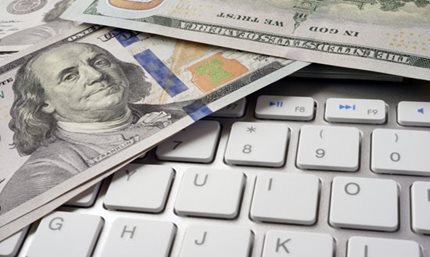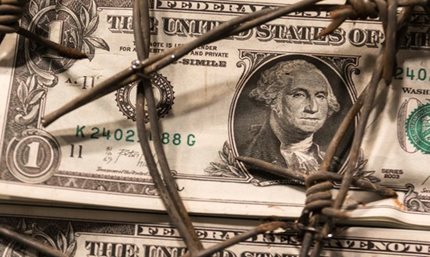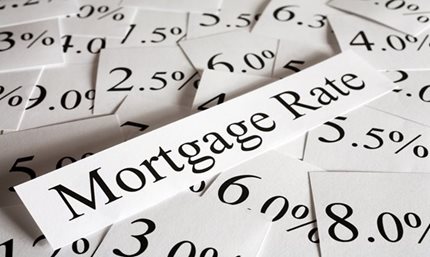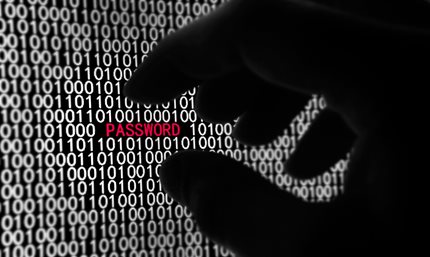News & Tips
Money Market Accounts: Everything You Need to Know

When considering safe, no-risk places to deposit your money, a savings account and a checking account are probably top of mind—and perhaps certificates of deposit (CDs). But how about considering another one that also comes with plenty of benefits: a money market account? (If you’re already ready to open yours, you can apply for your high-yield money market account here.)
Before we dive in with more specifics, this kind of account sometimes goes by other names, such as a money market deposit account (MMDA) and a money market savings account (MMSA). These are the exact same type of account—just with a slightly different name. One of the reasons we bring this up is because two other names for financial accounts—money market funds and money market mutual funds—are not the same as what we’ll be discussing here.
Benefits of Money Market Accounts
Here are the top benefits of money market accounts:
- Security: Despite the word “market” in the account’s name, this is not like investing in the stock market where you risk losing money if the value of your shares of stock plunges—and where you can earn high yields when the value of stock shares skyrockets. A money market account is a safe, predictable yield account that banks and credit unions offer, and it’s federally insured.
- High interest rates: This kind of account earns variable rates of interest, and at many financial institutions the interest rate on the account will go up as the balance does. This is the case at Space Coast Credit Union (SCCU) where we offer different tiers of interest, all competitive, depending upon the account balance.
- Flexibility: A money market account is also a versatile type of savings product because it combines the features of a savings account with the convenience of a checking account so you can make purchases, pay expenses, and so forth with the funds. To withdraw money, you’ll typically have the options of checks or a debit card. At SCCU, you’ll receive a free Visa® debit card.
Depositing Into Money Market Accounts
Money market accounts typically require a bigger opening deposit than a savings or checking account. Then, to keep increasing the interest rate, you can keep depositing money in increments that work for you. Keep in mind this is a variable rate account, but the best money market rates are always available when the balance is higher.
The minimum daily balance to keep the account open will also be more than on a savings or checking account. Money market accounts often come with restrictions, as well, in the number of times you can make withdrawals each month (but not at SCCU!).
One of the top benefits of this type of account: you can deposit extra cash into the account whenever you want. And, unlike a CD, you don’t have to wait for a maturity period to reap the rewards of your investment, because you will continue to earn higher rates of interest as your average daily balance grows.
Some of the financial wellness resources we provide to members are budgeting-related. Budgeting well can help you streamline expenses and save more money, which you can use to earn even more through your money market account. Resources include:
As you become even better at budgeting, you’ll be able to pay down debt or find wiggle room to save more money each month. And the more cash you have on hand, the more you can add to your high-yield money market account. If you’re wondering how much you should be saving to reach a goal, or for a rainy day, you can use one of our calculators to see the benefits of saving more.
Why Money Market Accounts Exist
Savings and checking accounts have a long history, and they are account types that most people are familiar with. Money market accounts, though—and the benefits they provide to consumers—are relatively new. Here’s a quick look back at how they developed.
In the 1970s, many people in the United States struggled financially as inflation made it more difficult for them to keep up with their monthly expenses. Earnings had stagnated and most households weren’t able to keep up with the rising prices. To make the problem more challenging, banks weren’t allowed to raise their deposit interest rates—despite the fact that they weren’t keeping up with the market conditions. To entice customers to keep their money in a bank or credit union, financial institutions gave out toasters, waffle irons, and other small appliances as incentives to open and keep accounts.
Understandably, consumers who weren’t satisfied with a toaster looked for other ways to invest their money, ones that might come with risk and didn’t guarantee that their principal would be protected, but came with higher interest rates and, thus, the possibility of greater earnings.
Regulators slowly allowed financial institutions to pay higher interest rates on their savings accounts. But, in many instances, this meant that the financial institutions were paying out higher rates in interest than they were making on loans. So, although this worked out better for consumers, financial institutions in the United States were under significant pressure as they attempted to maintain stability and weather market fluctuations of this kind.
To address these problems, President Ronald Reagan signed the Garn-St. Germain Depository Institutions Act of 1982. As one of the features of this Act, financial institutions could now offer money market accounts. Once available, they became quite popular because of the higher interest rates and how they combined useful features from savings and checking accounts.
Money Market Account Versus Checking Accounts
It can be helpful to compare money market accounts with other types of accounts to see how they’re alike and how they’re different. Then you can make the right decision for your specific needs.
With a checking account, you typically don’t need to make a significant opening deposit. This account allows you to deposit checks and cash, and direct deposit your paycheck. Then, you can use your debit card when shopping, write checks for your monthly bills, or set up automatic bill payments online. So, a checking account often serves as your “home base” for day-to-day financial transactions.
You won’t often find restrictions on the number of withdrawals you can make with a typical checking account. You can spend up to the amount that’s available but maintain a minimum balance to keep the account open. Checking accounts may or may not earn any interest. When they do, it’s often at a much lower interest rate than a money market account.
A money market account, meanwhile, pays higher interest rates. You can use this type of account similarly to a savings account where you save for a rainy day or a specific goal: for a new car, a down payment on a house, and so forth. You can access your funds as long as you:
- Keep the minimum required average daily balance (which will be higher than with a checking account)
- Stay within the number of transactions that your financial institution allows each month
If you can make deposits and maintain the minimum balance requirement without needing to write checks against the amount, a money market makes allows you to earn more interest and serves as a high-yield savings vehicle.
Money Market Account Versus Savings Accounts
You can usually open a savings account with a relatively small balance, save money, and earn interest on the balance. You can use a savings account to set aside emergency funds or for other specific purposes. In most cases, you can take out money as needed with no limits on the number of withdrawals; plus, the amount you need to keep the account open is usually small.
Money market accounts take the best of savings accounts—the ability to save your money and earn interest—with a higher interest rate, which helps your money to grow more quickly. That said, the money market account will need a bigger opening deposit and have a bigger balance requirement than a savings account.
Keep in mind that some financial institutions have a limit on the number of monthly withdrawals. Before April 2020, financial institutions needed to limit withdrawals/transfers to six each month (or statement cycle). The Federal Reserve Board got rid of that rule, though, to give consumers easier access to the money they have in their money market accounts during the pandemic. So now, until further notice, it’s up to the bank or credit union if they have a transaction limit.
Money Market Account Versus Certificates of Deposit
This is a good comparison to delve into. That’s because people who want to earn more than they can in a savings account may want to weigh the pros and cons of money markets versus certificates of deposit (CDs).
When opening a CD, you’ll need to meet the minimum deposit requirement like you would with a money market account. In return, with a CD, you’d earn a fixed interest rate for an agreed-upon time period. At the end of this term, the CD reaches maturation where the account owner can withdraw funds, “roll it over” into the same CD term or at the current rate, or put the money into another account, including into a CD with a different time frame.
CDs typically pay higher interest rates than checking, savings, or money market accounts. Because the interest rates are fixed, you know how much your CD will be worth at the end of its term; with variable rate products, it would be an estimate. Plus, you’ll find a wide range of CD terms available at financial institutions—could be anywhere from a month to 10 years.
The catch with a CD? You can’t withdraw the funds during the designated timeframe without facing an early withdrawal fee. So its limited liquidity means it’s a “hands-off” way to save whereas money markets accounts offer a little more flexibility in regards to withdrawing funds.
Although a money market account won’t typically have interest rates as high as a CD, you can withdraw funds without having to wait for a maturity date. So, each type of account comes with pros and cons, and it’s best to weigh them before choosing which type of account might be right for you.
One strategy that works well for some people: each time their CD matures, they take funds from their money market to deposit into their CD. That way, they increase the amount that will receive the higher interest rates associated with CDs.
SCCU Money Market Interest Rates and Terms
Our focus is to provide flexible products that allow you to build and maintain financial wellness. With our high-yield money market accounts, you can earn more as you move up the tier of interest rates. The current minimum opening deposit is $2,500 and that’s also the minimum required average daily balance. As long as you keep that amount in your money market, there’s no monthly service fee. If you go below the minimum, there’s a $15 fee for applicable months.
Now that we’ve explained the nuts and bolts, here are our current money market interest rates. Take note of the tiers. Your interest rate goes up when you reach the following balances: $10,000, $25,000, $50,000, $100,000 and $250,000. So, when you put in the maximum, you’ll earn the best money market rates for the time frame chosen.
When you need funds, you can easily access them with a transfer in Online or Mobile Banking, or by using the free Visa® debit card that you receive with your SCCU Money Market account. Additional benefits of having a high-yield money market account at SCCU include:
- Free mobile deposits29
- Free online & mobile banking60
- Account alerts to monitor activity
- Auto transfers, easily scheduled
- Free CALL-24 telephone banking
- Free eStatements
Naturally enough, you’ll be looking for the best money market rates, and those offered at credit unions are often among the most favorable.
| Balance | Tasa de dividendo | APY^ |
|---|---|---|
| $0 - $2,499.99 | 0.00% | 0.00% |
| $2,500 - $9,999.99 | 1.00% | 1.00% |
| $10,000 - $24,999.99 | 1.05% | 1.06% |
| $25,000 - $49,999.99 | 1.10% | 1.11% |
| $50,000 - $99,999.99 | 1.15% | 1.16% |
| $100,000 - $249,999.99 | 1.20% | 1.21% |
| $250,000 and over | 1.25% | 1.26% |
Minimum average daily balance required for some accounts. Rates are accurate as of the effective date displayed, and they are subject to change. The APY (Annual Percentage Yield) is a percentage rate that reflects the total amount of interest paid on the account, based on the interest rate and the frequency of compounding for a 365-day period. Fees may reduce earnings on the account.
Banks Versus Credit Unions
Here’s a comparison between banks and credit unions, and the benefits of each. The two biggest differences between the two: their profit status and their insurance providers.
Profit Status
Banks can either be privately owned or publicly traded institutions. In either case, they are for-profit organizations with one of their focuses being earning profits for the owner or shareholders. This means that they may pay lower interest rates on savings products, including money market accounts, while charging higher fees. On the other end of the saving-borrowing equation, banks may charge higher interest rates on loans with higher fees.
Credit unions, meanwhile, have a different structure. Being not-for-profit, they’re owned by their customers, who are known as “members.” So credit unions are a type of cooperative with everyone focused on a common goal. What’s good for one member is designed to be good for another. The board of directors is elected, and each board member must also be a member of the credit union. So, what’s in your best interest is also what’s best for the decision-making board and vice versa.
Credit unions offer memberships to people with a common bond—often geographically or because of the industry they work in. So, to share more about us, SCCU serves members who live in a certain geography—34 counties throughout central Florida and along Florida’s east coast. We currently serve more than 590,000 members with 64 branch locations. We’re the third-largest credit union in Florida with more than $8.5 billion in assets.
How They’re Insured
The second key difference in a credit union versus a bank is how they’re insured—in ways that are similar but not the same. Since 1933, the Federal Deposit Insurance Corporation (FDIC) has provided coverage up to $250,000 per depositor, per insured bank, for each account category. If a bank would run out of money or otherwise fail, account holders would receive money from their accounts by the FDIC.
Credit union accounts are insured through the National Credit Union Administration (NCUA): up to $250,000 per share owner (member), per insured credit union, for each account category. So, although the agencies that insure depositor accounts are different for banks and credit unions, the coverage is the same.
Other Differences
Banks may have more physical locations than credit unions. This was more of a differentiator before online/mobile financial transactions were available. Plus, SCCU has more than 60 branch locations that offer convenient in-person transactions.
Credit unions tend to be smaller than banks. This can create a more personalized experience at credit unions, one with excellent customer service. At SCCU, we’re here when you need us, looking out for your best interests. We know that your time is valuable, so we don’t waste it. Instead, we provide you with factual information you need to decide whether you would benefit from products like our high-yield money market account. We aren’t here to upsell you into something you don’t want; instead, we’re offering trusted products at competitive rates—and providing resources for members to achieve financial wellness.
SCCU: Here Before Money Market Accounts
By the time that money market accounts were available to members in 1982, SCCU had already been providing friendly, transparent financial services for more than thirty years. Chartered on June 7, 1951, our initial name was Patrick Air Force Base Credit Union. At that point, we had seven civil service employees to serve twenty-eight members with a total of $372 in assets.
Our footprint and services offered then expanded as our members’ needs grew and evolved—although our commitment to our members continued as strongly as ever. By the 1960s, we merged with several credit unions, gaining strength in numbers. In the 1980s, two key changes took place:
- Financial institutions could offer money market accounts.
- We changed our name to the Space Coast Credit Union to reflect our expanded membership and geographies.
Since that time, we’ve continued to expand. As we keep growing, we continue to look after our members’ financial interests, protecting them in all of our interactions.
We’re committed to making a difference in our members’ lives and to help improve the communities where we live, work, and play. So, we partner with local and national philanthropic organizations throughout the year, honored to be part of the central and south Florida community. We appreciate the chance to support non-profit agencies like the American Red Cross and United Way, hold food drives, recognize outstanding students and educators, and more.
SCCU gives back in many ways, including volunteering, charitable contributions, disaster relief, support of local events, and sponsoring events that benefit the communities we serve.
When you’re looking for a credit union in Florida, here are even more reasons why it makes sense to choose SCCU.
Contact SCCU
You can quickly and conveniently open your money market account online. If you’re not already a member, no worries. As long as you live or work in any of these counties in Florida, it’s easy to establish your membership with a minimum deposit of $5 in a Share Savings account. Then, once you’re an SCCU member, you can enjoy all of the benefits of credit union membership, including our low-rate loans and high-yield savings accounts. If you have any questions, feel free to get in touch with us here.



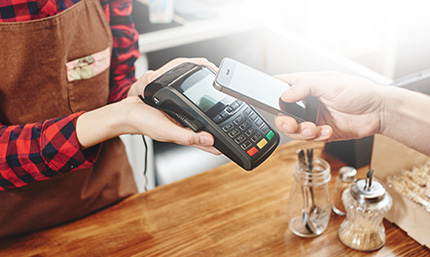















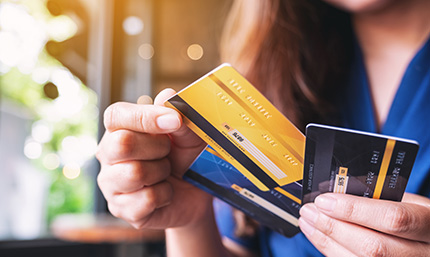

























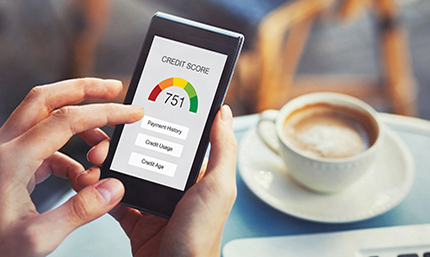




















































.jpg?width=430&height=257&ext=.jpg)














